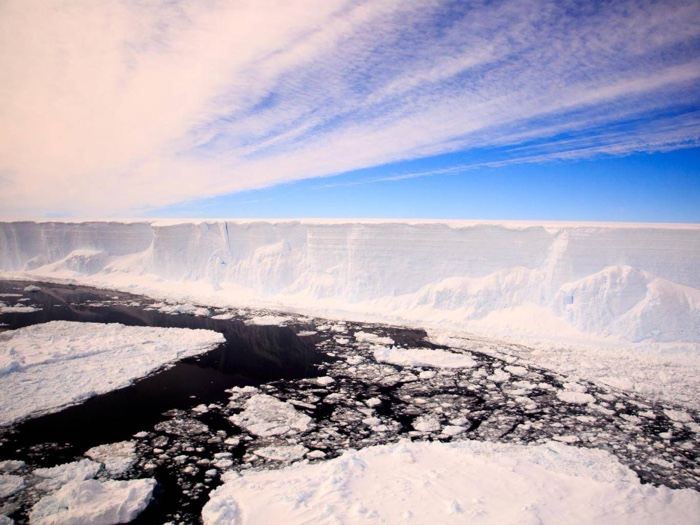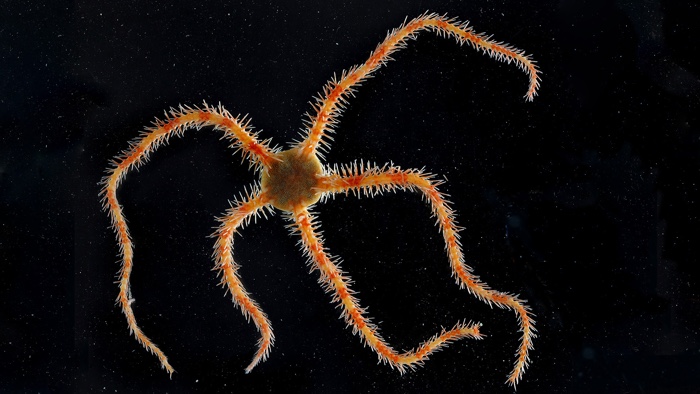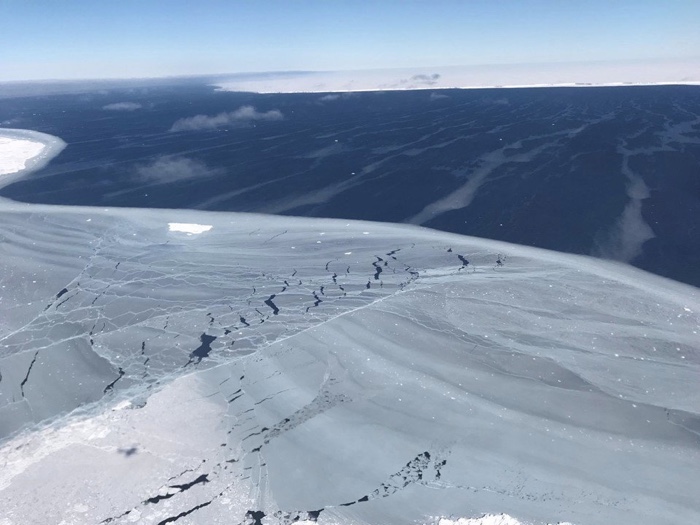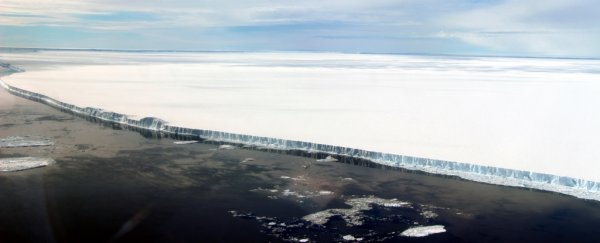There's an isolated, unknown realm that's been cut off from light for so long there's no telling what could survive in its freezing, dark waters – but it looks like we won't have to wait too long to find out.
A team of scientists led by the British Antarctic Survey (BAS) is setting off this week to explore a mysterious marine ecosystem under the Antarctic ice shelf – freshly exposed to light and air for the first time in up to 120,000 years, after a massive iceberg the size of Delaware broke free last July.
That epic mass – called A-68, and estimated to weigh in the ballpark of 1 trillion tonnes – began plotting its exit strategy from Antarctica's Larsen C ice shelf decades ago, when a small crack emerged back in the 1960s.
 (BAS)
(BAS)
For long years, the rift progressed slowly, if at all, until rapid developments saw the crack picking up pace in 2016, and on into 2017.
By July it was all over. The massive iceberg finally calved free of its ice shelf moorings, drifting out into the Southern Ocean (and eventual melty nothingness).
As the ice block shifted, it revealed a vast watery expanse of over 5,800 square kilometres (2,239 square miles) that hadn't seen daylight in almost forever, and now the rush is on to sail to those frigid waters to explore what life they might contain – before this rapid transformation in the Antarctic ecosystem irrevocably alters their previously undisturbed existence.
"We don't know anything about it, it has been covered by an ice shelf that is several hundred metres thick," BAS marine biologist Katrin Linse told The Independent.
"It's important we get there quickly before the undersea environment changes as sunlight enters the water and new species begin to colonise."
 Antarctic Brittle Star (BAS)
Antarctic Brittle Star (BAS)
Linse and fellow researchers will this week make their way to the Falkland Islands, from which scientists representing nine separate research institutions will embark later in the month on the BAS research ship RRS James Clark Ross, using satellite monitoring to help them steer through ice-infested waters to their remote destination.
"We need to be bold on this one," says BAS science director David Vaughan.
"Larsen C is a long way south and there's lots of sea ice in the area, but this is important science, so we will try our best to get the team where they need to be."
 (NASA)
(NASA)
On the three-week voyage, researchers will collect seafloor animals, microbes, plankton, sediments, and water samples, in addition to documenting evidence of any new marine mammals or birds that may have migrated to the exposed waters.
That's the plan, at least, but the team acknowledges they don't really know what to expect when they get there.
"We're going into an area where we don't know what we're going to find, and this is an exciting thing," Linse told BBC News Radio.
"I expect to find animals similar to animals we find in the extreme deep sea, so animals that are not used to feeding on green food, because there was no phytoplankton in the water above… We don't know until we've seen it."
What is for certain though is that it's vital researchers make the most of this unprecedented opportunity while it lasts – because observational windows like this sometimes take 100,000 years to open.
As marine ecologist Julian Gutt from the Alfred Wegener Institute for Polar and Marine Research in Germany – one of the participating institutions on this voyage – told Nature in October, "I cannot imagine a more dramatic shift in environmental conditions in any ecosystem on Earth".
